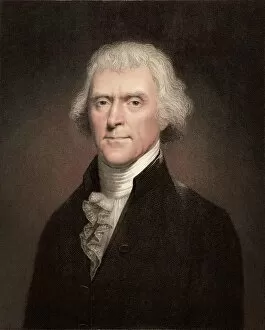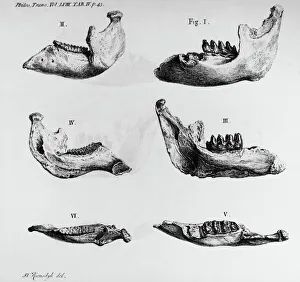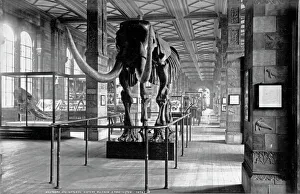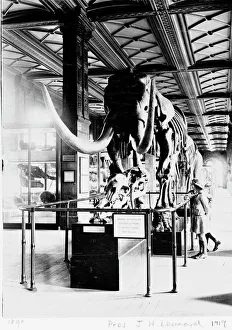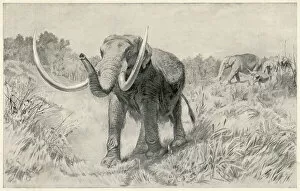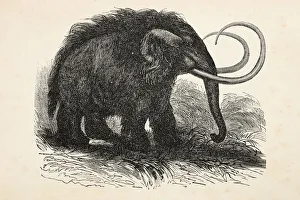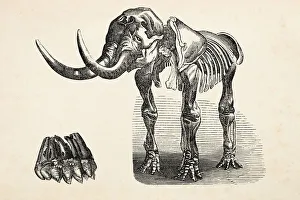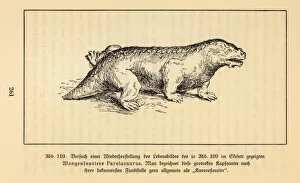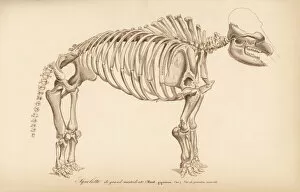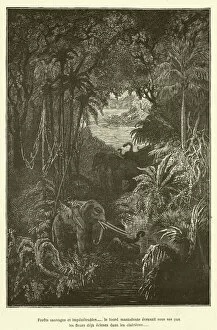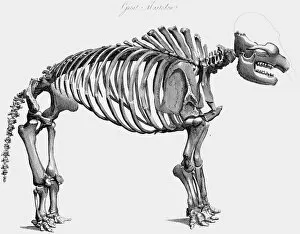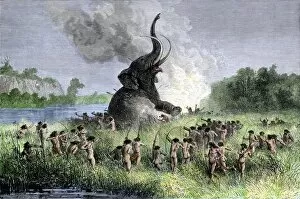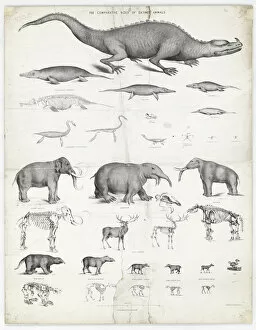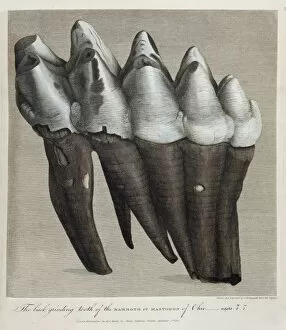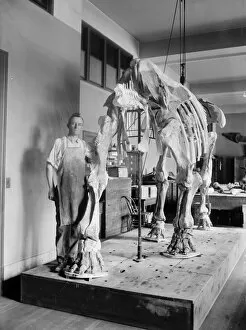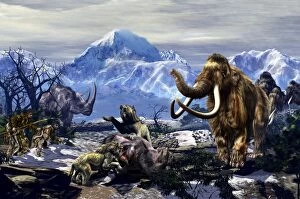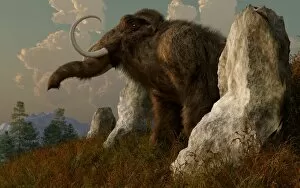Mastodon Collection
"Unearthing the Mysteries of Mastodon: A Journey Through Time" Step back in time to the Miocene era, where prehistoric wildlife roamed freely
All Professionally Made to Order for Quick Shipping
"Unearthing the Mysteries of Mastodon: A Journey Through Time" Step back in time to the Miocene era, where prehistoric wildlife roamed freely. Imagine encountering a majestic creature like the mastodon, with its massive size and impressive tusks. In 1766, George Croghan stumbled upon mastodon jaw bone fossils at Big Bone Lick in Kentucky. Recognizing their significance, he sent them to his friend Benjamin Franklin for further examination. This discovery sparked curiosity and fascination among early scientists. As we explore a Neanderthal landscape through artwork, we begin to grasp the magnitude of these ancient creatures' existence. The Geological Gallery at the Natural History Museum in 1892 showcases an array of fascinating specimens, including a captivating display featuring a mastodon. Fast forward to December 1919 when visitors marveled at the sight of a reconstructed mastodon skeleton proudly displayed in the Geological Gallery, and is here that one can truly appreciate the comparative sizes of extinct animals and comprehend just how colossal these creatures were. Palaeothey are believed to be ancestors of modern-day mastodons – connecting us directly to our distant past. Engravings from 1872 depict both woolly mammoths and elephant mastodons, reminding us that these magnificent beasts once roamed across vast landscapes. Even today, our fascination with this prehistoric giant remains strong as seen in a comic postcard depicting Stone Age Lyons Cafe from the 20th century – showcasing how deeply ingrained they are within popular culture. The legacy left by mastodons continues to captivate our imagination as we uncover more about their history and impact on Earth's ecosystems throughout time. Their story serves as a reminder that even long-extinct species have much to teach us about our planet's rich natural heritage.

